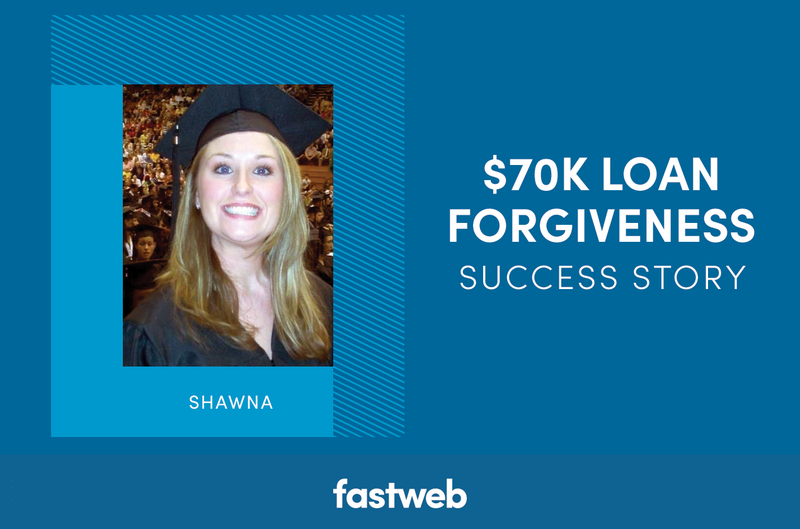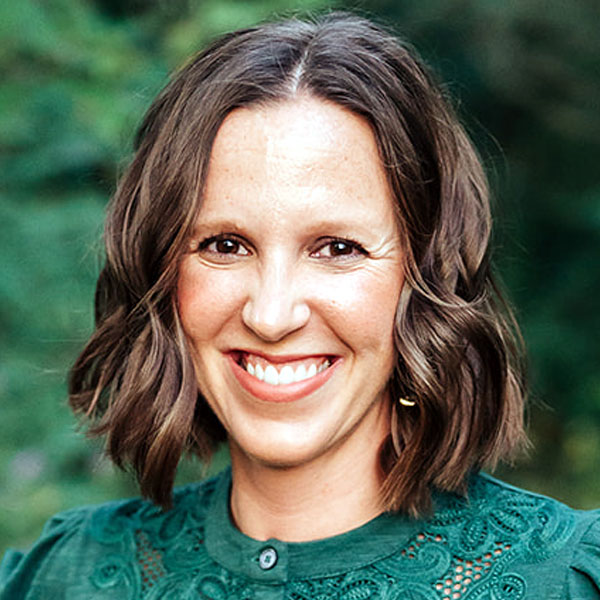Shawna Newman has been working as the Fastweb Managing Editor since 2019. In this role, she has helped countless students navigate the scholarship search and college admissions process.
But before she was a Fastweb Editor, she worked for over ten years as a Senior Marketing Specialist at the University of Central Missouri. As a marketing specialist, she developed content for the university’s website and marketing materials, and because she served in this role at a public university, it counted as working in public service.
Just last year, in her research of public service loan forgiveness for an article she was writing, she stumbled across some student loan forgiveness changes that gave her hope – not just for the student audience that she writes for – but for herself. You see, in addition to writing about student loans, Newman also owed over $70,000 in student loan debt.
New PSLF program rules, including payment count adjustments, have been implemented since this article’s original publish date. Additionally, the state of student-loan forgiveness continues to change. Visit the U.S. Department of Education to access the latest information on student loan forgiveness and student loan debt relief.
What started as a dream of loan forgiveness for Newman became a reality just a few short weeks ago. And because Newman is passionate about helping Fastweb members graduate with little to no debt, she felt it would be helpful to share her story to inspire other students in their journey to pay for school.
After re-reading the document a few times to ensure I didn’t interpret it wrong, I immediately called my husband and parents to let them know the news. They were aware of how this debt hung over me. The federal student loan debt I had obtained from 2002-2006 was a heavy financial burden to carry.
Unfortunately, the federal loan rates that I was locked into in 2006 were at their highest. The original amount I financed had compounded over many years, even while I was making monthly payments.
After graduation, I did take advantage of the Department of Education’s Income-Driven Repayment (IDR) option. Applying for and reapplying each year for IDR was time consuming, but a necessity for me.
Although my IDR was approved, I struggled to make payments for many years after my college graduation. I knew these were binding financial obligations I had agreed to in order to earn my Bachelor’s degree. Yet, even as a single mother working full-time at a state university, I made it happen.
Up until I received student loan forgiveness, I felt like there wasn’t an end in sight. Now, the Temporary Extended Public Service Loan Forgiveness (TEPSLF) letter I received is framed in my office!
When you took out student loans, were you provided any counseling that detailed student loan forgiveness?
Newman: Yes, I remember having to watch videos about student loans, agreeing I would have to pay these back. However, I didn’t realize the compounding component, nor did I understand I would be taking out federal student loans at a time when interest rates were at their highest!
I was a low-income, first-generation college student. I didn’t have the paying-for-college resources and practical conversations to understand there were many other life factors to consider when agreeing to the financial terms.
What steps did you have to take to qualify for student loan forgiveness?
Newman: Qualifying for the expanded PSLF program takes work. There’s no way around this! The process feels like a time-sink; it can feel daunting at times.
Visiting studentaid.gov to consolidate your student loans is the first step. Once this was complete, I used the PSLF Help Tool to enter in the details from my qualifying previous employers.
From this, I had to ensure the documents were signed by the proper employment official from my previous places of employment. After my employment certification was gathered and finished, I had to upload them to both my studentaid.gov and newly consolidated loan provider (FedLoan Servicing) profiles.
Then you wait. You will not receive news immediately. I began this process at the end of 2021 and only heard of my PSLF at the end of May 2022.
Were there any barriers that you met along the way?
Newman: Yes, I faced several barriers during this process. It’s important to know going in that you’ll need to have your old W-2s or your employers EIN handy. I wasn’t aware of this, and it took some digging and extra work.
I also had to make time to connect with the person I would be requesting employment certification from. While it’s not directly mentioned as part of the process, I believe it should be.
Communicating with the person to let them know this request will be coming their way will not only serve you, but it’s a kind gesture and helps them to prioritize their workload. This program is possibly adding another layer of work to many public service human resource departments.
I received numerous letters stating I was missing documents and even one that said I didn’t submit enough payments to qualify — this was not true. I could sense that there are struggles as the Department of Education is working toward implementation and program changes. Stick with it.
Had you known about student loan forgiveness before borrowing, would you have made different choices?
Newman: 100% -- I would have made different choices before borrowing student loans. While I don’t believe it’s a bad thing to use federal student loans to pay for college, I wish I would have exhausted more financial resources before student loans.
Remember, I was a first-generation college student. Looking back, I feel I was under-served when it came to advice on how to pay for college as a high school student and even as a college student.
I didn’t have a mentor encouraging me to apply for scholarships and wasn’t aware of any scholarship databases. If only I had known about the Fastweb scholarship site, I do believe I could have been better informed and given the proper tools to look for and apply for scholarships!
I also wish I would have known about all the other options there were to pay for college. I often wonder if I knew I could have applied to a military academy or enlisted in the military as a way to pay for college…would I have chosen a different path?
What resources were helpful to you as you worked toward student loan forgiveness?
Newman: You should consider the U.S. Department of Education’s Federal Student Aid site as your primary resource. The PSLF Help Tool is a must-use component to the student loan forgiveness process!
How can students better prepare themselves for taking out student loans?
Newman: While it may seem too far away to bother with understanding, know how student loans work. Even high school students should have a basic understanding prior to enrolling in college or trade school. Use reliable information on student-focused sites like Fastweb — we offer a lot of information about financial aid and student loans!
What advice do you have for students and borrowers on taking out student loans and qualifying for forgiveness?
Newman: This may not be popular approach but try to have a good career path in mind prior to enrolling in college. The FAFSA aside, I believe one of the most over-looked processes to figuring out how you’re going to pay for school is planning your career path.
You may have an “ah-ha moment” and realize you should start your journey to college off differently—a way that will protect your financial future. Think about where and what you see yourself doing ten-years after college and look for unique pathways that can help you get there without accruing a heavy financial load at the end of your destination.
Don’t be afraid to be your own advocate! Ask about student loan interest rates and understand compounding interest. Take your financial aid award packages seriously. Be bold with your questions and prepare to ask for more financial opportunities, if needed.
Apply for scholarships. It’s a great honor to hold a college degree—not many people can claim this accomplishment. But with anything worthwhile, you must put in the work.
Americans are in uncharted territory when it comes to student loans and the repercussions of not-so-good decision making. As most salaries are low in the public-service fields, the current PSLF is a necessary adaptation for the current times, but it’s not a fix.
Don’t expect for this retro employment period exemption to last—Temporary Expanded Public
Service Loan Forgiveness (TEPSLF) expires in October 2022. You will be expected to pay back any student loans you take out.
PSLF Loan Forgiveness: Fastweb Editor Shares Success Story
Are you wondering, “Do I qualify for loan forgiveness?” One Fastweb Editor shares how she took the right steps to qualify.

Get details about a real-life loan forgiveness success story.
